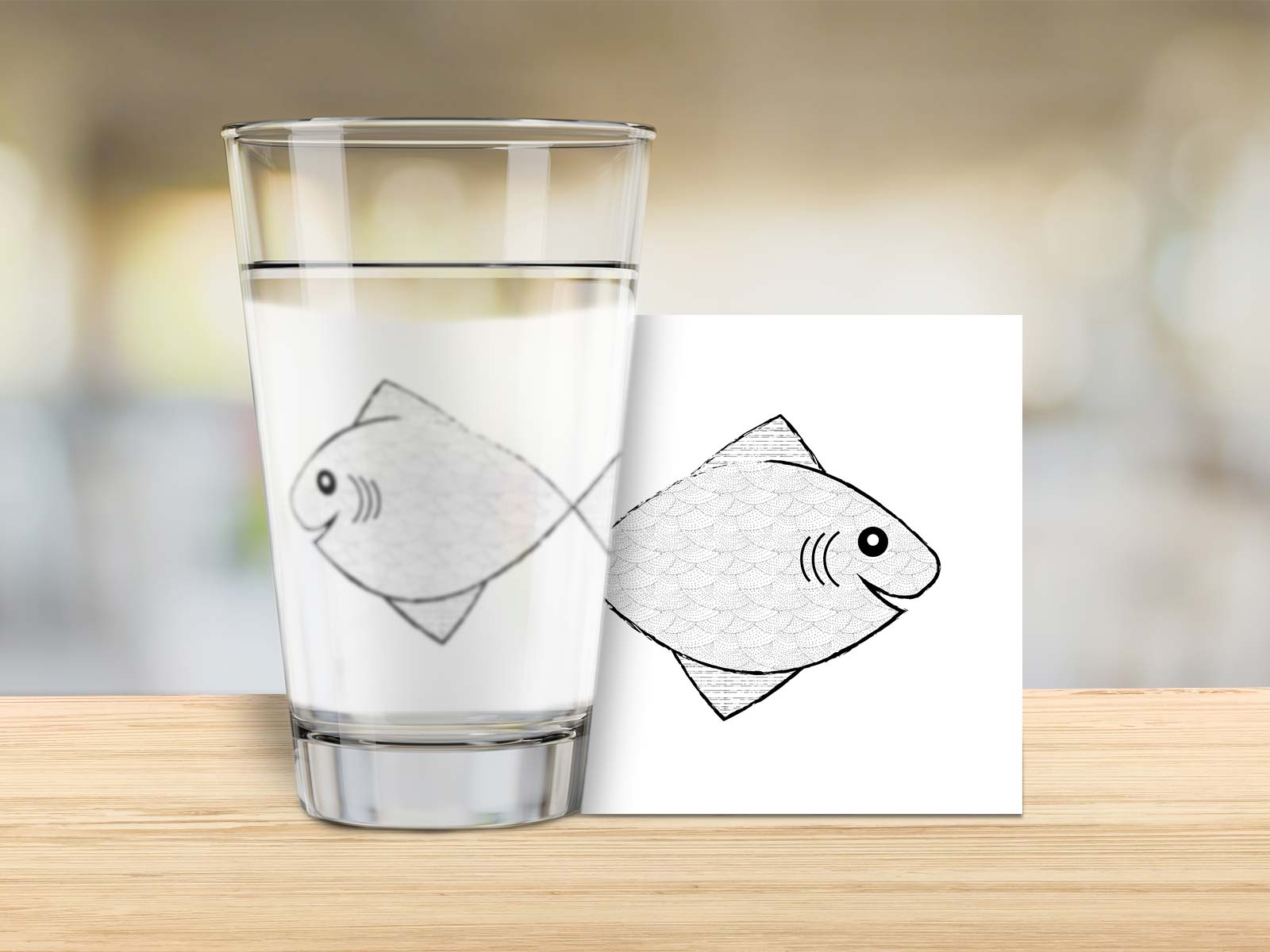Introduce your kids to light refraction with this simple science experiment that can Turn a Fish!

What to get:
- A glass or jar
- Water
- A simple fish drawing
What To do:
- Prop the drawing up so that it stands vertically.
- Place the glass or jar a few inches in front of the drawing and observe the drawing through the glass.
- Slowly fill the glass with water and watch what happens to the fish. (You may have to move the glass closer to or further from the fish to see this illusion.)
The science behind the experiment:
As light waves travel through different substances, their speed changes, which changes the light’s direction and the light is “bent” or refracted. (Think of how your speed changes when you try to move quickly in water, and the density of the water slows down your movements.) What we see when we look at an object is the light that is bounced back (reflected) at us as it refracts off of the object. Light refraction is a fascinating thing to observe, it feels like magic!
The water slows down the light and changes the angle at which it bounces back to our eyes, making the coin under the glass invisible. The bending of light also magnifies things, so the coin inside the jar looks bigger. The jar and water act like a lens, bending the light rays inward to a focal point, where the light rays come together. But the light continues past the focal point, and the rays pass each other, so the light that was on the left side is now on the right, and vice versa. That is why the fish changes directions!
Scientists ask questions:
- Does the size of the fish drawing make a difference?
- Does the size of the jar or the glass change the result?

